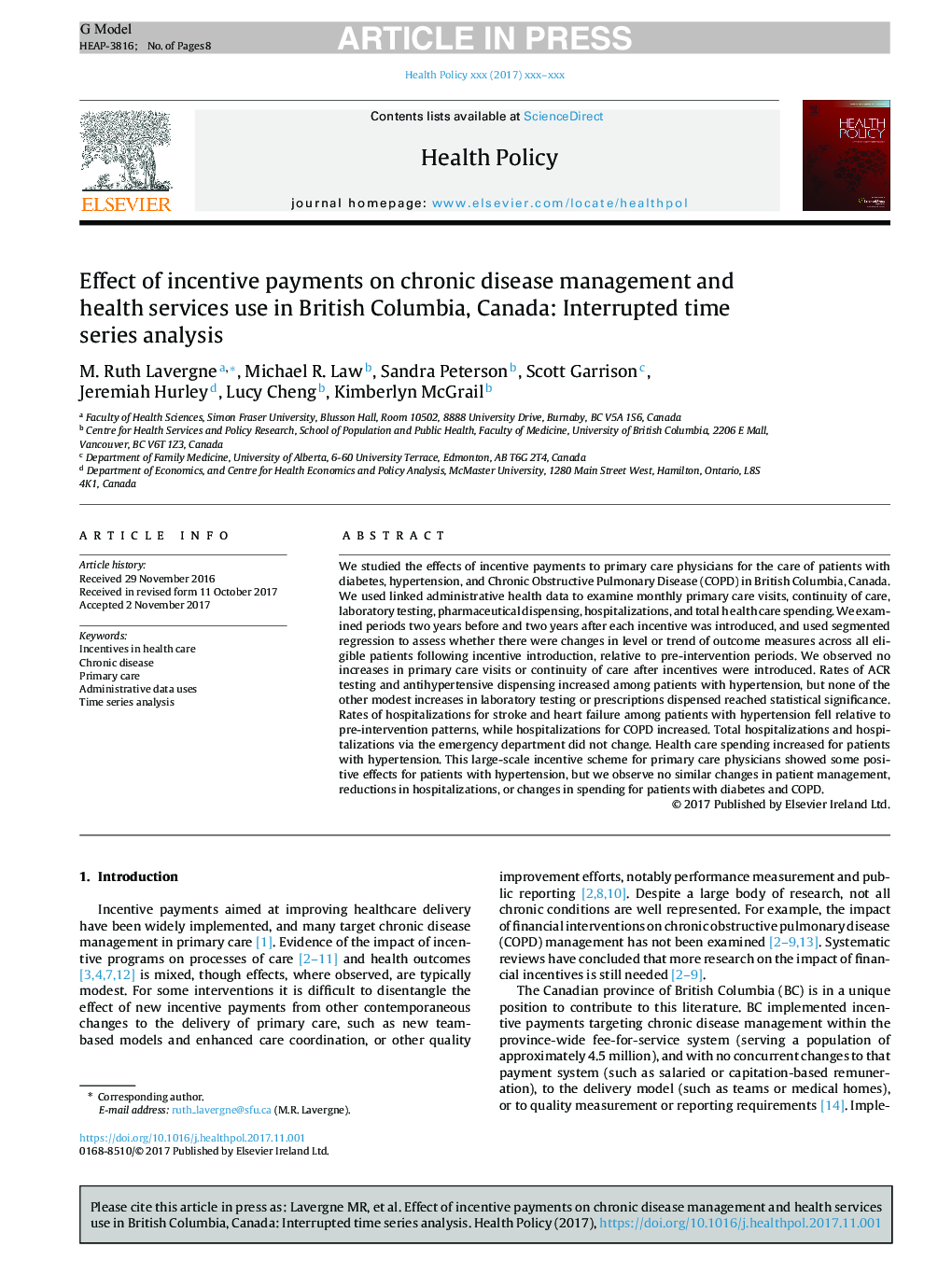| Article ID | Journal | Published Year | Pages | File Type |
|---|---|---|---|---|
| 8818013 | Health Policy | 2018 | 8 Pages |
Abstract
We studied the effects of incentive payments to primary care physicians for the care of patients with diabetes, hypertension, and Chronic Obstructive Pulmonary Disease (COPD) in British Columbia, Canada. We used linked administrative health data to examine monthly primary care visits, continuity of care, laboratory testing, pharmaceutical dispensing, hospitalizations, and total h ealth care spending. We examined periods two years before and two years after each incentive was introduced, and used segmented regression to assess whether there were changes in level or trend of outcome measures across all eligible patients following incentive introduction, relative to pre-intervention periods. We observed no increases in primary care visits or continuity of care after incentives were introduced. Rates of ACR testing and antihypertensive dispensing increased among patients with hypertension, but none of the other modest increases in laboratory testing or prescriptions dispensed reached statistical significance. Rates of hospitalizations for stroke and heart failure among patients with hypertension fell relative to pre-intervention patterns, while hospitalizations for COPD increased. Total hospitalizations and hospitalizations via the emergency department did not change. Health care spending increased for patients with hypertension. This large-scale incentive scheme for primary care physicians showed some positive effects for patients with hypertension, but we observe no similar changes in patient management, reductions in hospitalizations, or changes in spending for patients with diabetes and COPD.
Related Topics
Health Sciences
Medicine and Dentistry
Public Health and Health Policy
Authors
M. Ruth Lavergne, Michael R. Law, Sandra Peterson, Scott Garrison, Jeremiah Hurley, Lucy Cheng, Kimberlyn McGrail,
